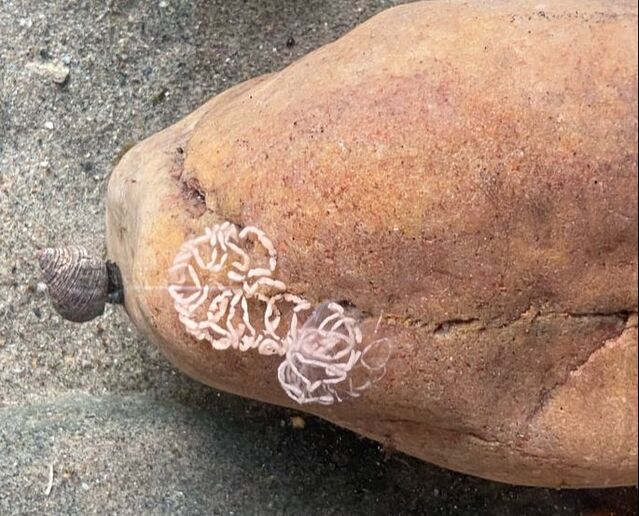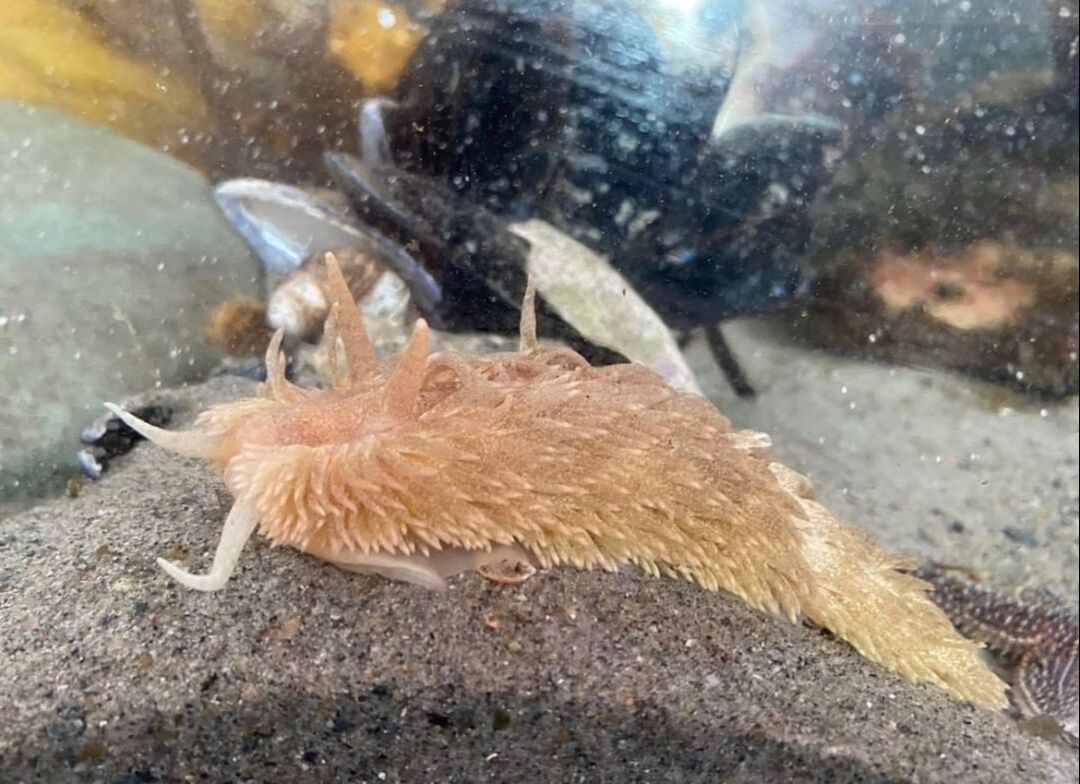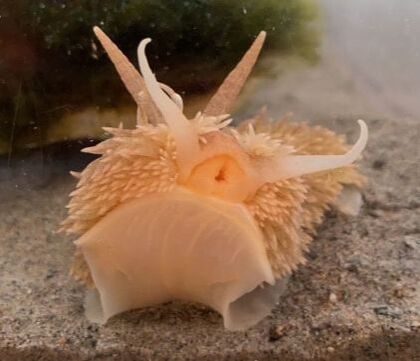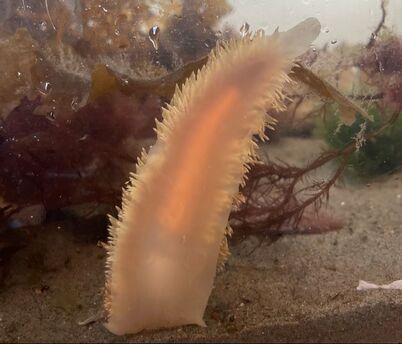|
By Sarah Holleran This past season at the Touch Tank Hut, we welcomed a new animal we haven't had before; a maned nudibranch (Aeolidia papillosa)! Let's take some time to learn about this fin-tastic animal and why we at Back to the Sea think it is so claw-some. Touch Tank Hut's maned nudibranch out for a stroll Nudibranchs (pronounced NEW-dee-bronk) Many visitors at the Touch Tank Hut, including myself, are intrigued by the nudibranch, commonly known as the sea slug. These animals are soft-bodied, shell-less marine molluscs. You will often see our nudibranch at the bottom of our tanks, cruising over sand and rocks. Nudibranchs can be found at the bottom of shallow waters in all of the world's oceans, feeding on other invertebrates, particularly sea anemones. They feed using their radula, which is comparable to a spike-y tongue. While eating sea anemones, nudibranchs also soak up their prey's pigment into their tissue, which allows them to camouflage from predators. Nematocysts, or 'stinging cells' are a common feature on sea anemones and they are ingested by nudibranchs and used for defence purposes. They can be found on the outgrowths on nudibranchs called "cerata". Up close and personal with our maned nudibranch Nudibranch Love Nudibranchs, just like snails, are hermaphrodites, which means they have both male and female reproductive organs. For nudibranchs to reproduce, they can mate with any other mature nudibranch that is the same species as them. While doing a dance-like courtship, sperm is exchanged from both partners where it is stored until the eggs are ready for fertilization,. The eggs are then laid by both nudibranchs in a unique spiral formation. Shortly after we obtained our lovely nudibranch, it laid eggs in our tank. At first, they were a big surprise to staff members as we had never seen anything like this in our tanks before. After doing some research, we found out that our nudibranch had laid eggs around our tank. It was exciting to show visitors and volunteers, since many people have never seen a nudibranch in real life before, let alone nudibranch eggs (me including)!  Nudibranch eggs next to a periwinkle at the Touch Tank Hut Chemical Communication Nudibranchs have another extremely fascinating thing about them - they are strong communicators! Just like snails, nudibranchs leave a trail behind them as they crawl along the ocean floor (or our touch tank). The trail they leave behind is filled with chemicals and nudibranchs use this to communicate with others. The trail can tell other nudibranchs about a potential danger, or help to attract a potential partner. When it comes time to finding their food or a mate, nudibranchs use their rhinophores which are sensory organs or tentacles found on the back of the head or neck. These are also found in animals such as sea hares. Nudibranch sliding down the tank glass Sea it Yourself! As you can see, nudibranchs are amazing marine animals and we were so happy to have one living at the Touch Tank Hut for the 2022 season. You might even be able to see one for yourself in shallow area between kelp fronds! Keep your eyes on the water!
1 Comment
|
Categories
All
We send blog recaps with in all our quarterly newsletters!
|



